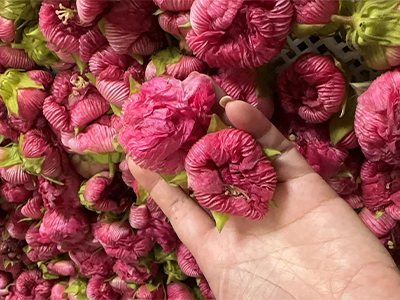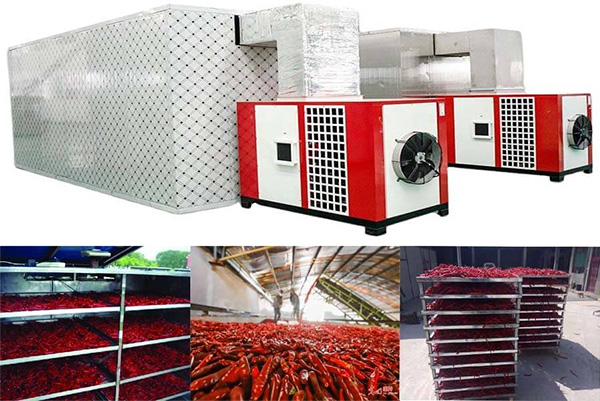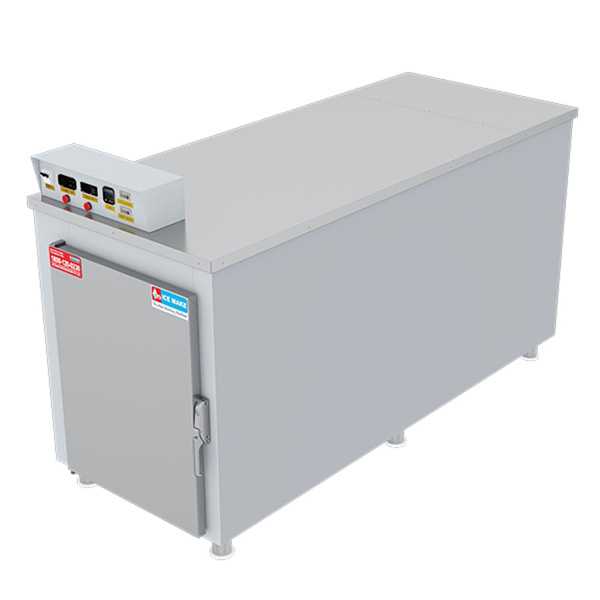
Content Menu
● Introduction
● Understanding Air Drying Machines for Food
>> What is an Air Drying Machine for Food?
>> How Do Air Drying Machines Work?
● Types of Air Drying Machines for Food
>> 1. Home Food Dehydrators
>> 2. Commercial Air Dryers for Food
>> 3. Industrial Food Drying Systems
● Key Features of Modern Air Drying Machines for Food
>> 1. Temperature Control
>> 2. Adjustable Timer
>> 3. Multiple Trays
>> 4. Even Air Distribution
>> 5. Energy Efficiency
● Applications of Air Drying Machines in Food Preservation
>> 1. Fruit and Vegetable Drying
>> 2. Meat Dehydration
>> 3. Herb and Spice Drying
>> 4. Pet Treats
>> 5. Flower and Craft Preservation
● Benefits of Using Air Drying Machines for Food Preservation
>> 1. Extended Shelf Life
>> 2. Nutrient Retention
>> 3. Space-Saving Storage
>> 4. Cost-Effective
>> 5. Customization
● Choosing the Right Air Drying Machine for Your Needs
● Maintenance and Care of Air Drying Machines
● The Future of Air Drying Technology in Food Preservation
● Industrial Applications of Air Drying Machines
>> Key Features of Industrial Air Drying Machines
>> Industries Benefiting from Air Drying Technology
● Environmental Impact and Sustainability
>> Reducing Food Waste
>> Energy Efficiency
>> Sustainable Packaging
● Conclusion
● Frequently Asked Questions
>> 1. What types of food can be preserved using an air drying machine?
>> 2. How long does the drying process typically take in an air drying machine?
>> 3. Are air-dried foods as nutritious as fresh foods?
>> 4. How do I prevent food from sticking to the trays in my air drying machine?
>> 5. Can industrial air drying machines be used for non-food products?
Introduction
In the ever-evolving world of food preservation, air drying machines for food have emerged as a game-changing technology. These innovative devices, also known as food dehydrators, have revolutionized the way we preserve fruits, vegetables, meats, and herbs. This comprehensive guide will explore the ins and outs of air drying machines for food, their benefits, applications, and impact on both home and industrial food preservation.
Understanding Air Drying Machines for Food
What is an Air Drying Machine for Food?
An air drying machine for food, commonly referred to as a food dehydrator, is a device designed to remove moisture from various food items. These machines use a combination of warm air circulation and controlled temperature to gradually extract water content from foods, resulting in preserved products with extended shelf life.

How Do Air Drying Machines Work?
The working principle of air drying machines for food is relatively simple yet highly effective:
1. Warm air generation: The machine produces warm air using a heating element.
2. Air circulation: A fan distributes the warm air evenly throughout the drying chamber.
3. Moisture extraction: As the warm air circulates, it absorbs moisture from the food items.
4. Exhaust: Moist air is expelled from the machine, maintaining a constant flow of dry air.
This process continues until the desired level of dehydration is achieved, which can vary depending on the type of food and intended use.
Types of Air Drying Machines for Food
1. Home Food Dehydrators
These compact units are designed for household use and typically feature multiple trays for drying various foods simultaneously. They're perfect for small-scale food preservation and making homemade snacks.
2. Commercial Air Dryers for Food
Larger in scale and capacity, commercial air dryers are used in restaurants, small-scale food production facilities, and specialty food stores. They offer higher output and more precise control over drying conditions.
3. Industrial Food Drying Systems
These large-scale systems are designed for mass production and are commonly used in the food processing industry. They can handle large volumes of food and often incorporate advanced features for optimal efficiency and consistency.

Key Features of Modern Air Drying Machines for Food
1. Temperature Control
Advanced air drying machines offer precise temperature control, allowing users to set the ideal drying temperature for different types of food. This feature is crucial for preserving heat-sensitive nutrients and maintaining food quality.
2. Adjustable Timer
An adjustable timer enables users to set specific drying durations, ensuring consistent results and preventing over-drying.
3. Multiple Trays
Most food dehydrators come with multiple trays, allowing for the simultaneous drying of various food items. This multi-tray air drying machine design maximizes efficiency and output.
4. Even Air Distribution
High-quality air drying machines feature advanced air circulation systems that ensure even distribution of warm air, resulting in uniform drying across all trays.
5. Energy Efficiency
Modern food drying technology focuses on energy efficiency, with many models designed to minimize power consumption while maximizing drying effectiveness.
Applications of Air Drying Machines in Food Preservation
1. Fruit and Vegetable Drying
Air drying machines are excellent for preserving a wide variety of fruits and vegetables, including:
- Apples
- Bananas
- Berries
- Tomatoes
- Carrots
- Peppers
The drying process concentrates flavors and creates healthy, long-lasting snacks.
2. Meat Dehydration
Air drying machines are perfect for creating jerky and other dried meat products. The controlled drying environment ensures food safety while preserving flavor and texture.
3. Herb and Spice Drying
Drying herbs and spices in an air drying machine helps retain their essential oils and flavors, resulting in high-quality dried herbs for cooking and tea-making.
4. Pet Treats
Many pet owners use air drying machines to create healthy, preservative-free treats for their furry friends.
5. Flower and Craft Preservation
Beyond food, air drying machines can be used to preserve flowers and create materials for various crafts.
Benefits of Using Air Drying Machines for Food Preservation
1. Extended Shelf Life
By removing moisture, air drying machines significantly extend the shelf life of foods, reducing waste and allowing for long-term storage.
2. Nutrient Retention
The low-temperature drying process helps preserve heat-sensitive vitamins and minerals, maintaining the nutritional value of foods.
3. Space-Saving Storage
Dried foods take up less space than their fresh counterparts, making storage more efficient.
4. Cost-Effective
By allowing users to buy seasonal produce in bulk and preserve it, air drying machines can lead to significant cost savings over time.
5. Customization
Users can create custom dried food blends, seasonings, and snacks tailored to their preferences.

Choosing the Right Air Drying Machine for Your Needs
When selecting an air drying machine for food, consider the following factors:
1. Capacity: Determine how much food you plan to dry regularly.
2. Size: Consider the available space in your kitchen or facility.
3. Temperature range: Ensure the machine offers the temperature control needed for your intended use.
4. Energy efficiency: Look for models with good energy ratings to minimize operating costs.
5. Noise level: Some machines can be noisy, which may be a concern for home users.
6. Ease of cleaning: Look for machines with dishwasher-safe trays and easy-to-clean designs.
7. Additional features: Some models offer extra features like automatic shut-off or preset drying programs.
Maintenance and Care of Air Drying Machines
To ensure optimal performance and longevity of your air drying machine, follow these maintenance tips:
1. Clean trays and the interior after each use.
2. Check and clean air filters regularly.
3. Inspect the heating element and fan for any signs of wear or damage.
4. Store the machine in a clean, dry place when not in use.
5. Follow the manufacturer's guidelines for regular maintenance and potential part replacements.
The Future of Air Drying Technology in Food Preservation
As technology continues to advance, we can expect to see further innovations in air drying machines for food:
1. Smart connectivity: Integration with mobile apps for remote monitoring and control.
2. Improved energy efficiency: Development of even more energy-efficient drying technologies.
3. Advanced sensors: Implementation of moisture and nutrient sensors for optimal drying.
4. Hybrid technologies: Combination of air drying with other preservation methods for enhanced results.
5. Sustainable materials: Use of eco-friendly materials in machine construction.
Industrial Applications of Air Drying Machines
In the industrial sector, air drying machines for food play a crucial role in large-scale food processing and preservation. These industrial-grade systems are designed to handle high volumes of food products efficiently and consistently.
Key Features of Industrial Air Drying Machines
1. Large capacity: Industrial units can process hundreds or even thousands of kilograms of food in a single batch.
2. Continuous operation: Many industrial air drying machines are designed for continuous operation, allowing for 24/7 production.
3. Advanced control systems: Sophisticated control panels enable precise management of temperature, humidity, and airflow.
4. Energy recovery systems: Some industrial units incorporate heat recovery technology to improve energy efficiency.
5. Customizable configurations: Industrial air drying machines can often be customized to suit specific product requirements and production layouts.
Industries Benefiting from Air Drying Technology
1. Snack food industry: Production of dried fruits, vegetables, and meat snacks.
2. Ingredient manufacturers: Drying of herbs, spices, and other food ingredients.
3. Pet food industry: Manufacturing of dried pet treats and food.
4. Pharmaceutical industry: Drying of certain medicinal herbs and plants.
5. Nutraceutical industry: Production of dried superfood powders and supplements.
Environmental Impact and Sustainability
As the food industry increasingly focuses on sustainability, air drying machines for food are gaining attention for their potential to reduce food waste and energy consumption.
Reducing Food Waste
By extending the shelf life of foods, air drying machines help reduce food waste at both the consumer and industrial levels. This is particularly important for seasonal fruits and vegetables that might otherwise spoil before consumption.
Energy Efficiency
Modern air drying machines, especially those using heat pump technology, are significantly more energy-efficient than traditional drying methods. This results in lower energy consumption and reduced carbon footprint.
Sustainable Packaging
Dried foods often require less packaging than their fresh counterparts, potentially reducing plastic waste in the food industry.
Conclusion
Air drying machines for food have revolutionized the way we approach food preservation, offering an efficient, cost-effective, and nutrient-preserving method for extending the shelf life of various food products. From compact home units to large-scale industrial systems, these machines have found applications across the food industry and in households worldwide. As technology continues to evolve, we can expect air drying machines to play an increasingly important role in sustainable food preservation and reducing food waste.
Frequently Asked Questions
1. What types of food can be preserved using an air drying machine?
Answer: Air drying machines can be used to preserve a wide variety of foods, including fruits, vegetables, meats, herbs, and even some dairy products like yogurt. Common items include apples, bananas, berries, tomatoes, beef jerky, herbs, and mushrooms. However, foods with very high fat or moisture content may not be suitable for air drying.
2. How long does the drying process typically take in an air drying machine?
Answer: The drying time can vary significantly depending on the type of food, its moisture content, the thickness of the slices, and the specific settings of the air drying machine. Generally, fruits and vegetables can take anywhere from 6 to 16 hours, while meats for jerky may take 4 to 15 hours. Some items like herbs might dry in as little as 2 to 4 hours.
3. Are air-dried foods as nutritious as fresh foods?
Answer: While some nutrient loss is inevitable during any preservation process, air drying is generally considered one of the best methods for retaining nutrients. Many vitamins and minerals remain intact, and the concentration of certain nutrients can actually increase relative to the food's weight. However, some heat-sensitive vitamins, like vitamin C, may decrease during the drying process.
4. How do I prevent food from sticking to the trays in my air drying machine?
Answer: To prevent sticking, you can try several methods:
- Use non-stick drying sheets or parchment paper on the trays.
- Lightly oil the trays before adding food (for non-fruit items).
- Flip the food items halfway through the drying process.
- Ensure you're not overloading the trays, as this can lead to uneven drying and sticking.
5. Can industrial air drying machines be used for non-food products?
Answer: Yes, industrial air drying machines can be adapted for use with various non-food products. They are often used in industries such as pharmaceuticals for drying medicinal plants, in the textile industry for drying fabrics, and in the lumber industry for drying wood. However, it's important to note that machines used for non-food products should not be used for food drying to prevent contamination.












